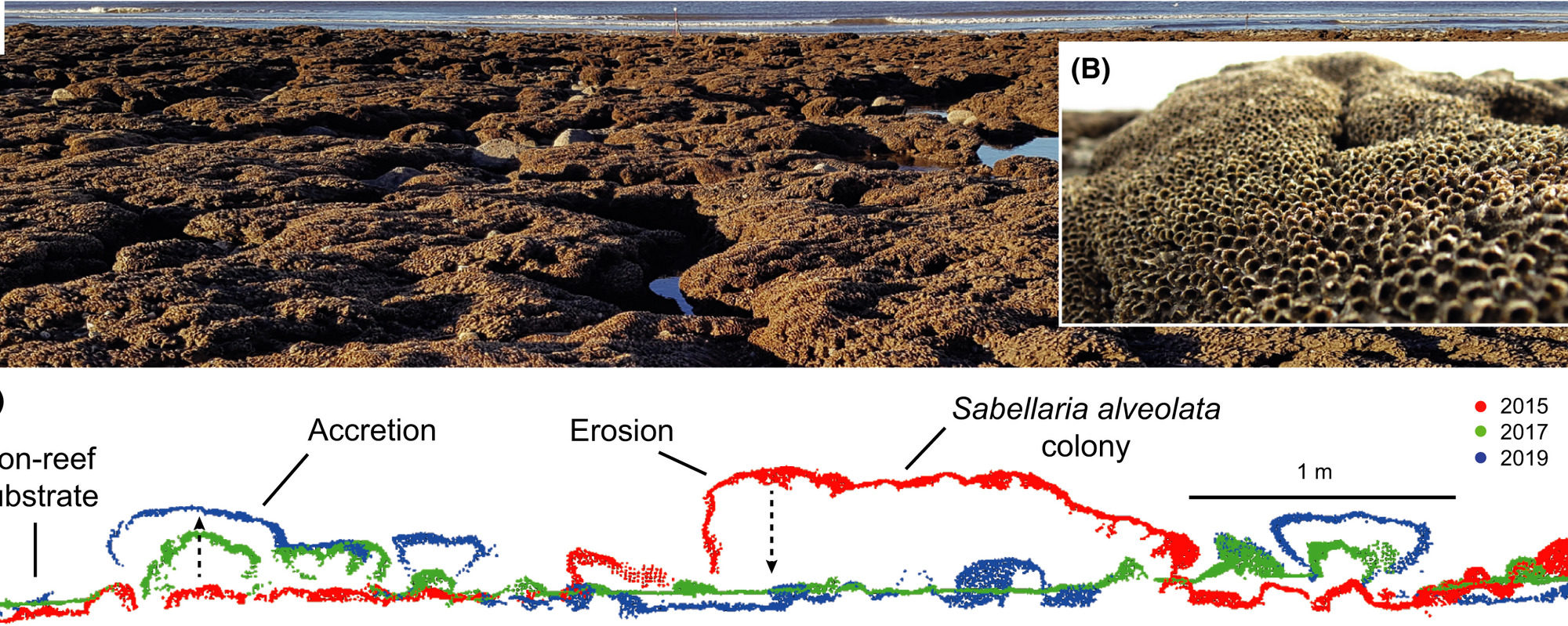Three‐dimensional mapping reveals scale‐dependent dynamics in biogenic reef habitat structure
Tim Jackson‐Bué, Gareth J. Williams, Guy Walker‐Springett, Steven J. Rowlands, Andrew J. Davies
Abstract
Habitat structure influences a broad range of ecological interactions and ecosystem functions across biomes. To understand and effectively manage dynamic ecosystems, we need detailed information about habitat properties and how they vary across spatial and temporal scales. Measuring and monitoring variation in three‐dimensional (3D) habitat structure has traditionally been challenging, despite recognition of its importance to ecological processes. Modern 3D mapping technologies present opportunities to characterize spatial and temporal variation in habitat structure at a range of ecologically relevant scales. Biogenic reefs are structurally complex and dynamic habitats, in which structure has a pivotal influence on ecosystem biodiversity, function and resilience. For the first time, we characterized spatial and temporal dynamics in the 3D structure of intertidal Sabellaria alveolata biogenic reef across scales. We used drone‐derived structure‐from‐motion photogrammetry and terrestrial laser scanning to characterize reef structural variation at mm‐to‐cm resolutions at a habitat scale (~35 000 m2) over 1 year, and at a plot scale (2500 m2) over 5 years (2014–2019, 6‐month intervals). We found that most of the variation in reef emergence above the substrate, accretion rate and erosion rate was explained by a combination of systematic trends with shore height and positive spatial autocorrelation up to the scale of colonies (1.5 m) or small patches (up to 4 m). We identified previously undocumented temporal patterns in intertidal S. alveolata reef accretion and erosion, specifically groups of rapidly accreting, short‐lived colonies and slow‐accreting, long‐lived colonies. We showed that these highly dynamic colony‐scale structural changes compensate for each other, resulting in seemingly stable reef habitat structure over larger spatial and temporal scales. These patterns could only be detected with the use of modern 3D mapping technologies, demonstrating their potential to enhance our understanding of ecosystem dynamics across scales.
Full Citation
Jackson‐Bué T, Williams GJ, Walker‐Springett G, Rowlands SJ, Davies AJ (2021) Three‐dimensional mapping reveals scale‐dependent dynamics in biogenic reef habitat structure. Remote Sensing in Ecology and Conservation


